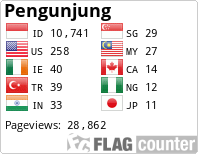Eksposur materi autentik di kelas Bahasa Inggris sebagai Bahasa Asing
DOI:
https://doi.org/10.55606/jupensi.v3i1.1229Keywords:
authentic material, exposure, Teaching English as a Foreign Language (TEFL).Abstract
Grammar rule-based learning is frequently emphasized in traditional English classes in Indonesian primary, middle, and high schools. The test-based education system creates classes that produce a type of English that does not appear to be spoken outside of the classroom. As a result, the students struggle to adjust to English by native speakers in the real world. Those who connect with native speakers must constantly alter their linguistic behavior in areas of language where suitable instruction was not provided. To address this phenomenon, it is important to build a self-created "English Environment" by exposing students to authentic material that is set at their natural level and interest, which will raise their sensitivity and proficiency in the target language. Authentic materials such as writing, essays, short stories, and song lyrics in realistic language can be used in class and English teachers should ideally use a variety of authentic materials in addition to English textbooks to stimulate the natural language learning process, allowing for effective English as a foreign language class. Thus, the article discusses how teachers can use authentic materials effectively in English as a foreign language classes and how authentic materials can help students learn the real context of English.
References
Canale, M. and Swain, M. 1980. Theoretical bases of communicative approaches to second language teaching and testing. Applied Linguistics 1 (1), 1-47.
Kim, D. (2000). A Qualitative Approach to the Authenticity in the Foreign Language Classroom: A Study of University Students Learning English in Korea. Texas Papers in Foreign Language Education, 5(1), 189-205.
Masgoret, A. M., and Gardner, R. C. (2003). Attitudes, Motivation, and Second Language Learning: A Meta-Analysis of Studies Conducted By Gardner and Associates. Language Learning, 53:1, 123-163.
Morton, R. (1999). Abstracts as Authentic Material for EAP Classes. ELT Journal, Vol. 53/3, 177-182.
Sun, Z. (2010). Language Teaching Materials and Learner Motivation. Journal of Language Teaching and Research, Vol. 1, No. 6, 889- 892.
Warschauer, M. (2010). Invited commentary: New tools for teaching writing. Language Learning and Technology., 14(1), 3–8.
Widdowson, H. G. (1979). Explorations in Applied Linguistics. Oxford University Press, Oxford.
https://englishcoachonline.com/blog/advantages-of-using-authentic-materials/
Downloads
Published
How to Cite
Issue
Section
License
Copyright (c) 2023 Jurnal Pendidikan dan Sastra Inggris

This work is licensed under a Creative Commons Attribution-ShareAlike 4.0 International License.
















